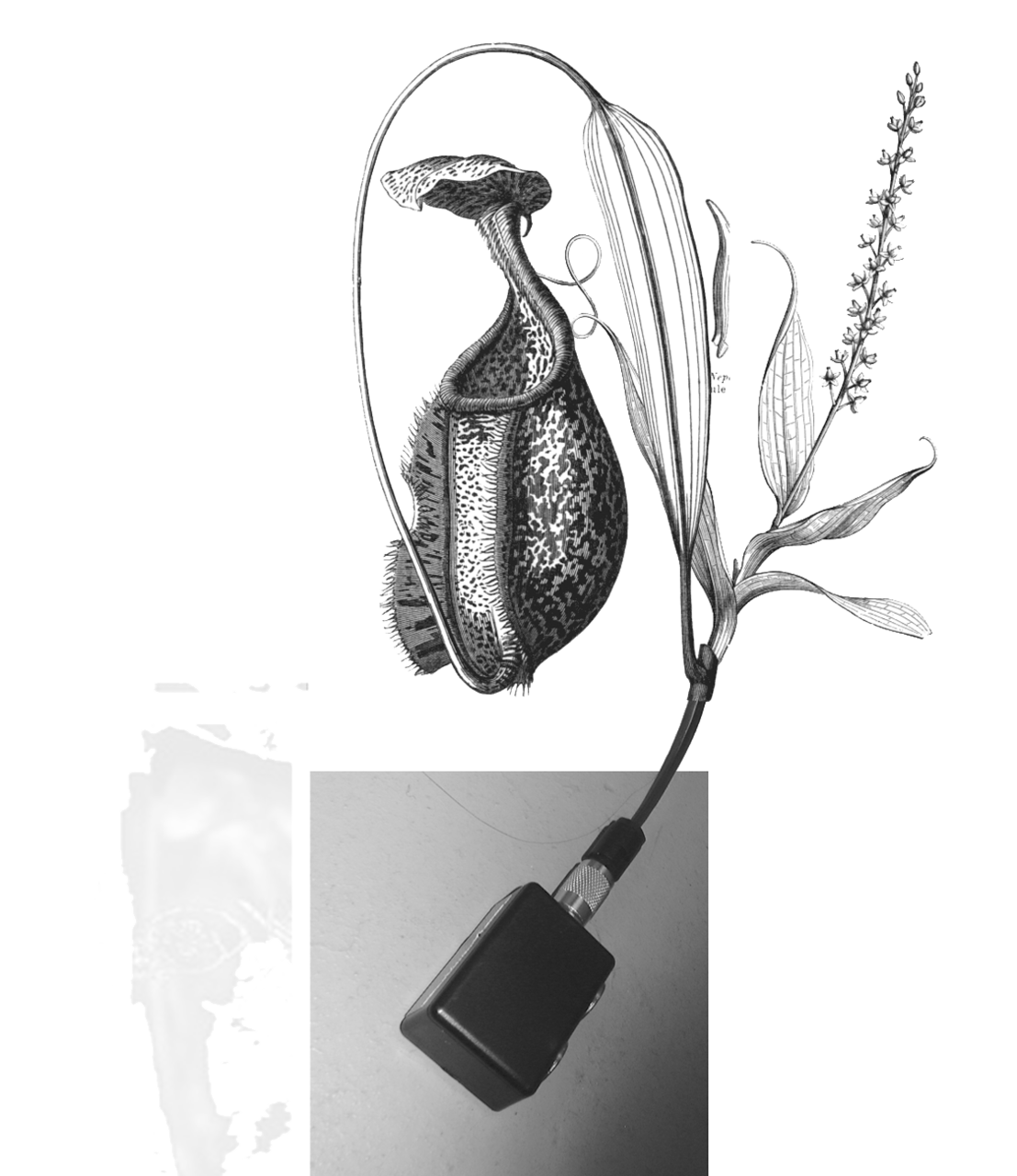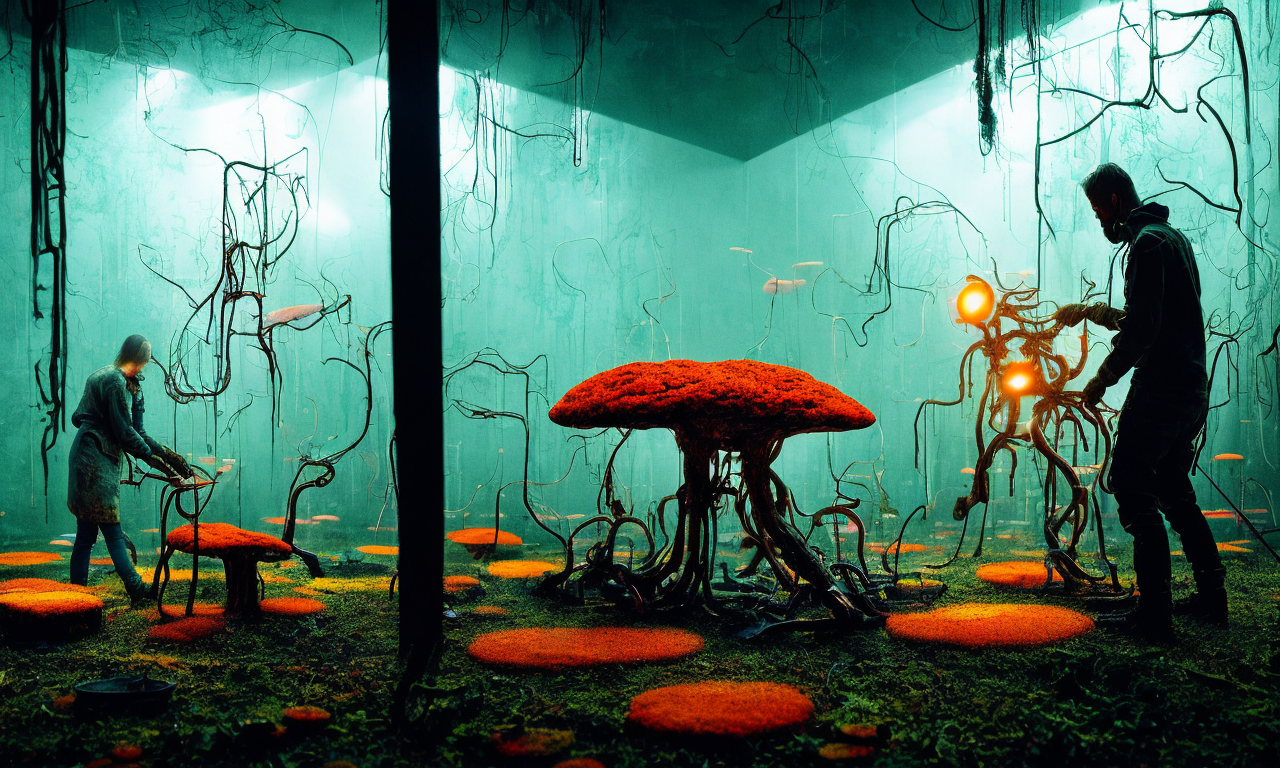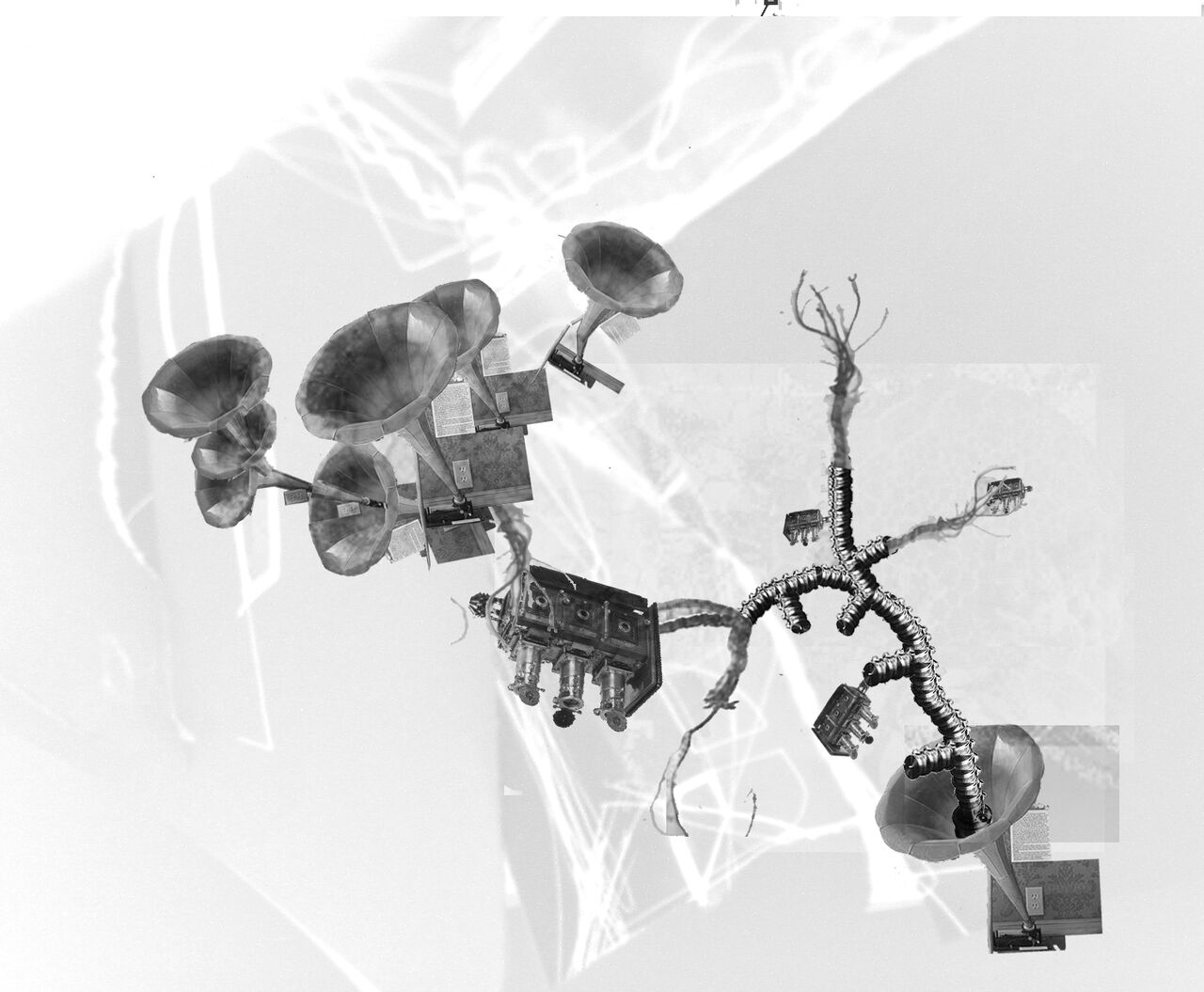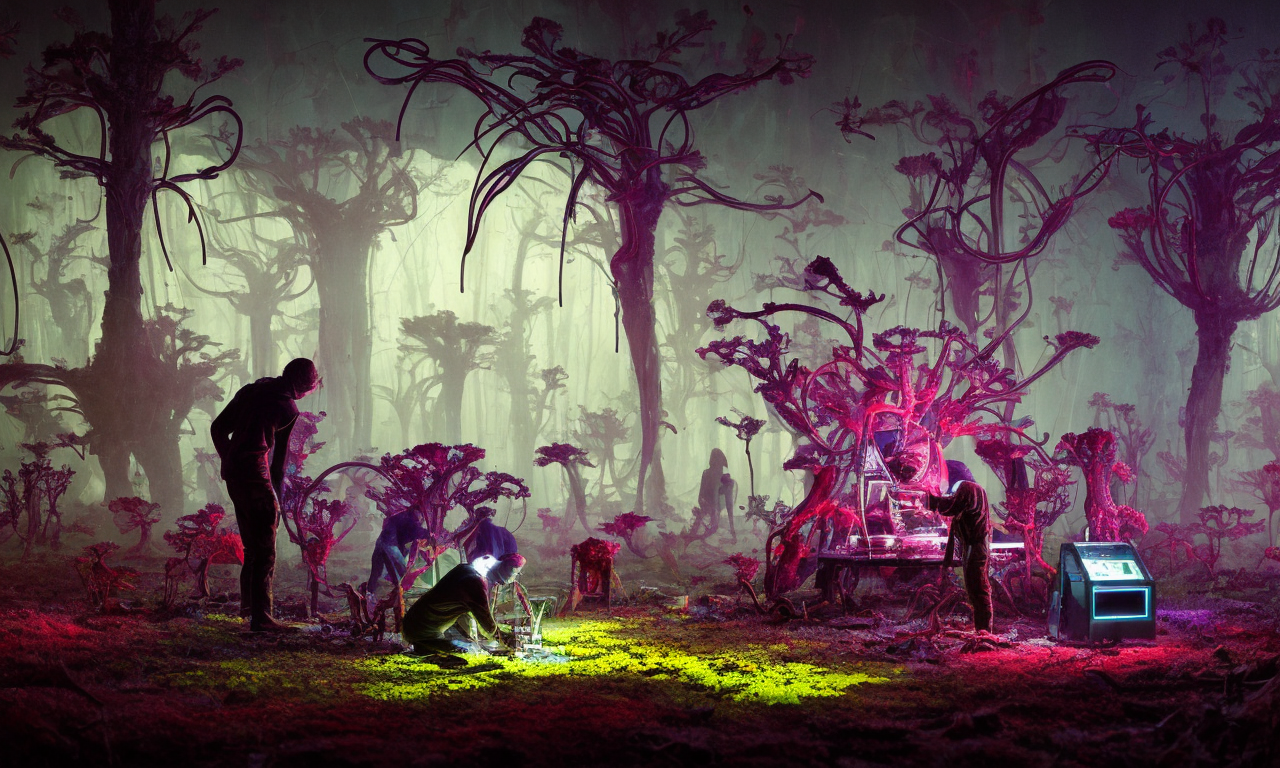Cursory Speculations on Human-Plant Interaction
What if we could translate plant signalling into languages understandable by humans?
With excerpts from: groworld HPI: Speculations on the Evolution of Human Plant Interactions first performed at the Mutamorphosis conference in Prague in 2007 and the extended/distended rewrite HPI_II presented at ISEA 2008 in Singapore.

Venturing to communicate with plants would require humans to grasp the logic of the “vegetal mind”. Plant signalling is hard to perceive and difficult to decipher without assistance. We could stand on the shoulders of plant neurobiology, which developed as a scientific discipline researching plants’ signalling and adaptive behaviour. Further on the edges of scientific replicability, we could learn from Cleve Backster’s biocommunication experiments with a specimen of Dracena Massengeana connected to a polygraph, Cleve Backster. Primary Perception: Biocommunication with Plants, Living Foods, and Human Cells or the imaginative crescographs by Jagdish Chandra Bose and Randall Fontes. “Detecting Biodynamic Signals” by Michael Theraux, in Journal of Borderland Research These experiments look at plant growth and movement in response to external stimuli and attempt to understand plant perception and communication.
 Crescograph
Crescograph
This is where knowledge of human-computer interaction might be informative. Digital technologies appear at the “surface”, an area of contact between the dissimilar realms of humans and machines. To operate on this surface, HCI reduces the range of human expression or action in very particular ways (for example, typing words from a specified vocabulary, or agreeing only to point to one thing at a time) in exchange for enhancing or augmenting those well-defined actions in reasonably specific, agreed-upon ways. It extends the human operator in a given direction, while leaving other directions, or sensibilities, to deteriorate.

In the near future, bio- and eco-technology (particularly on nano-scales) suggest the possibility for humans to interface, on different scales, with the living systems that surround us. As a botanical parallel to the field of HCI (Human-Computer Interaction), HPI (Human-Plant Interaction) explores the nature of surfaces and processes required to facilitate mutually beneficial interaction between humans and plants. HPI may not be able to emerge without a technological substrate, a mediation layer analogous to a cell membrane or language interpreter. For such technologies to become possible, HCI specifically, and computing in general, needs a radical shift away from serial, singular, fragile systems to embrace the distributed, concurrent, robust techniques nature utilises.
The field of computer science has developed a variety of methods to determine the nature of the machine mind by comparing it to the human mind (the Turing test being the best known example). However, it is quite anthropocentrically arrogant to think that human sentience, perception, and behaviour is the only possible expression of consciousness. Why measure sentience by how well it mirrors that of humans? Nature may contain a myriad of disparate sentiences, operating according to their own internally consistent, externally incomprehensible logic. We might be “hearing their voices” daily, but have no sensory and mental capacity to translate and interpret their meaning.

HPI necessarily takes a symbiotic approach, being shaped by the questions it poses. How can this two-way interface be realised? What assumptions are we making with regards to how we understand humans and plants? Where, or what, is the point of contact? How do we make the transition from machinic to organic? What changes are required, and what further changes would occur in the plants and humans using such interfaces? How does the nature of time, place, and metabolic byproducts (such as oxygen, CO2, alcohol, nitrogen) differ on each side of these interfaces? How can we form a closer symbiosis between the human and vegetable kingdoms? Communication, or pollination?

The experiences of space, time, movement, and persistence differ greatly between the human and botanical realms. Over millennia of evolution, humans developed increasing mobility between places, avoiding environmental or social degradation by moving “away”. On a cosmic scale, we are Earth-bound organisms just as grounded as plants — at the time of writing, there is no “away” for a globalised human society. As our economies and cultures operate on an increasingly planetary scale, current instabilities cannot be overcome by moving “away” — adaption needs to come from within.



In order to interface with plants, humans would have to go through a gradual time-unbinding, In Science and Sanity: An Introduction to Non-Aristotelian Systems and General Semantics Alfred Korzybski proposes “time binding” as differentiating human activity from the “space binding” and “energy binding” activities of animals and plants respectively a relinquishing of short-term, short-lived, incremental advances for slower cycles of growth and decay. Imagine feeling like a forest, consisting of billions of roots and rhizomes underground and trillions of leaves, stems, branches and flowers above ground. A vast, flexible organism able to expand, bend, and twist, curl and wrap, but not crawl, walk, or run. Would our thinking become more reticulate, our logic less linear? How would we reconcile our drive to become unique individuals, or separate entities living in a community, with that of the plants being the community, connected though kilometres of roots and soil?

Part of the challenge in mediated human-plant interaction is the development of non-anthropocentric translation services. Any HPI interface will need to translate our understanding of the constants and variables of our lives into a system of communication comprehensible to plants, and vice versa. According to Karl Schroeder, creating such an interface is about “establishing personal and cultural relationships between human beings and the physical world that make the true natures of both comprehensible to us”.

❧
Further Reading & references can be found in the bibliography.